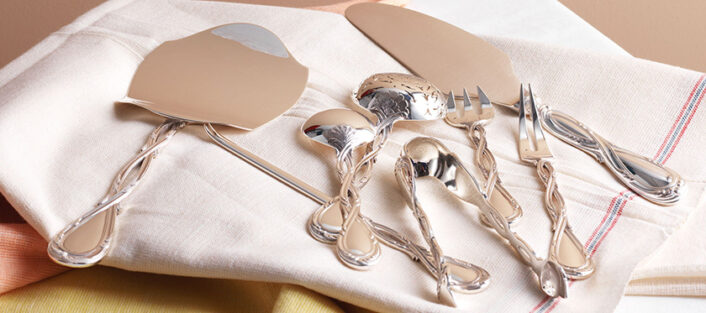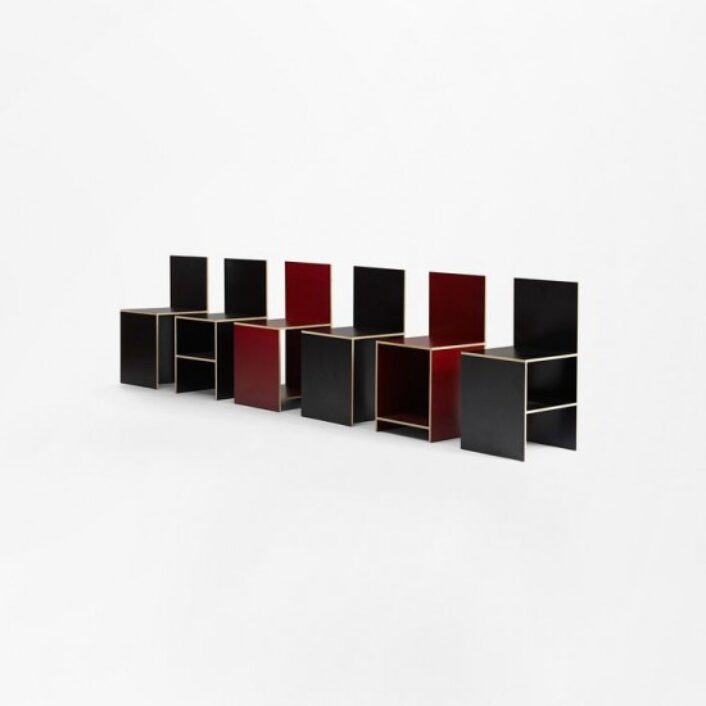Design
Puiforcat + Donald Judd
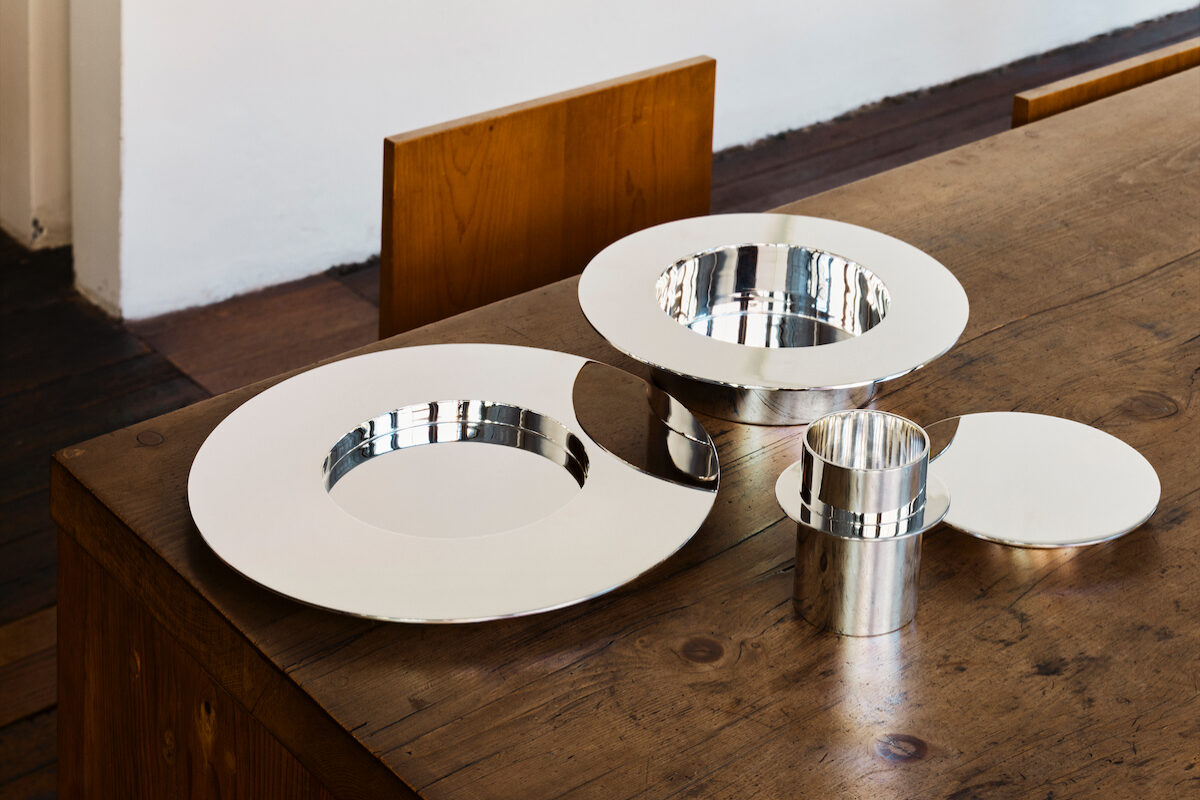
At the time, Judd had prototypes in both ceramic and stainless steel made…
Image courtesy of: Paper City Magazine, photographed by: Eric Poitevin
When you mix Donald Judd’s minimalistic aesthetic and Puiforcat’s long history of contemporary French silversmithing, you get something truly spectacular. In 1989, Judd sketched designs for a series of tableware pieces. His desired collection included cups, bowls, and plates in cylindrical forms and intersected by sharp, ninety-degree angles.
A short five years prior to Judd’s untimely death, the sketches were never conceived… past a couple of prototypes. The artist sketches and technical drawings were created in Marfa; and they have been hiding out in the Marfa archive for the past 30+ years.
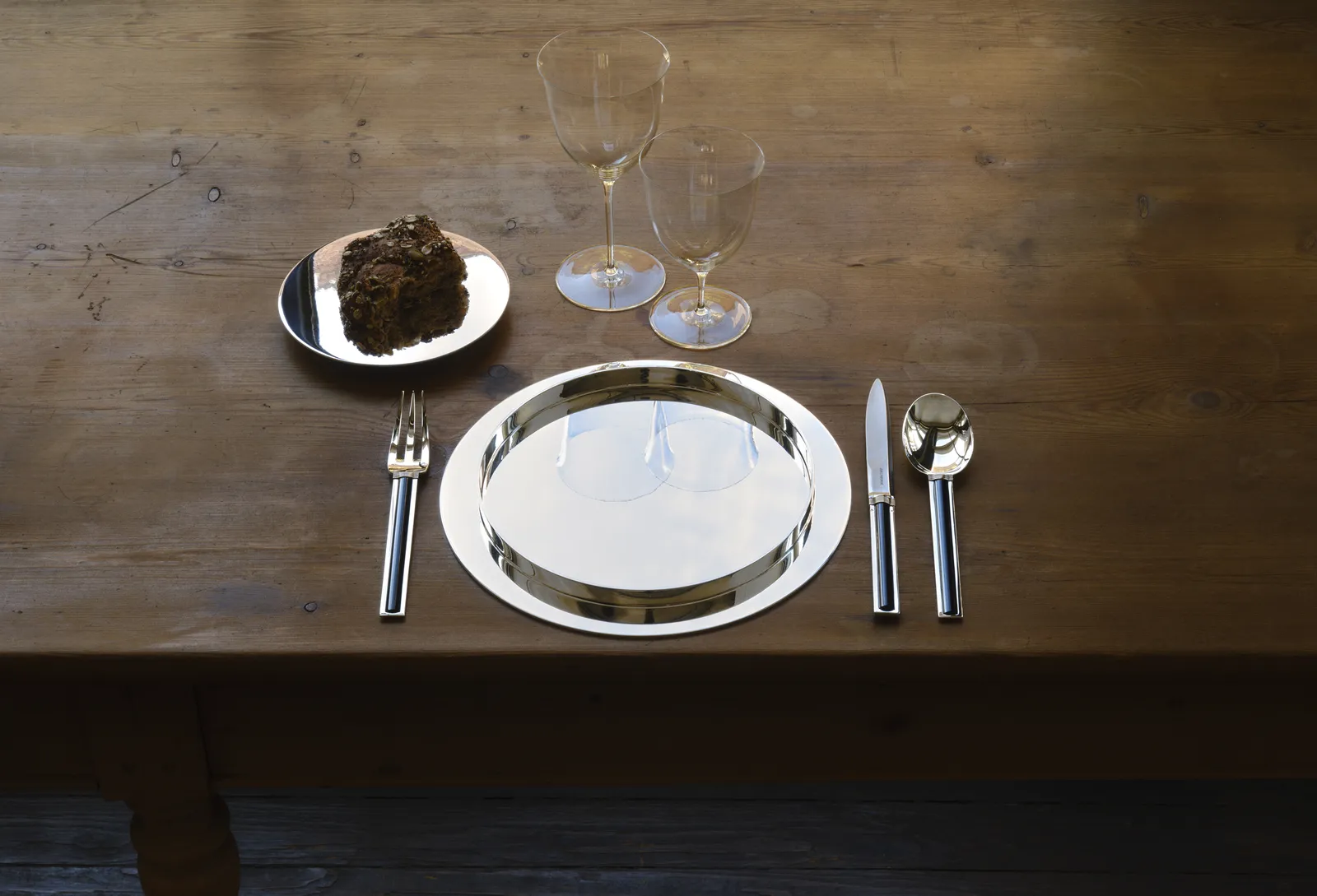
The collection debuted in May.
Image courtesy of: Wallpaper, photographed by: Eric Poitevin
The designs (courtesy of The Wall Street Journal Magazine) “capture Judd’s signature: deceptively simple constructions that require great technical skill to manufacture.” The shapes are reminiscent of Judd’s furniture pieces and sculptures. However, simple as they appeared on paper, they were quite difficult to fabricate in the desired material.
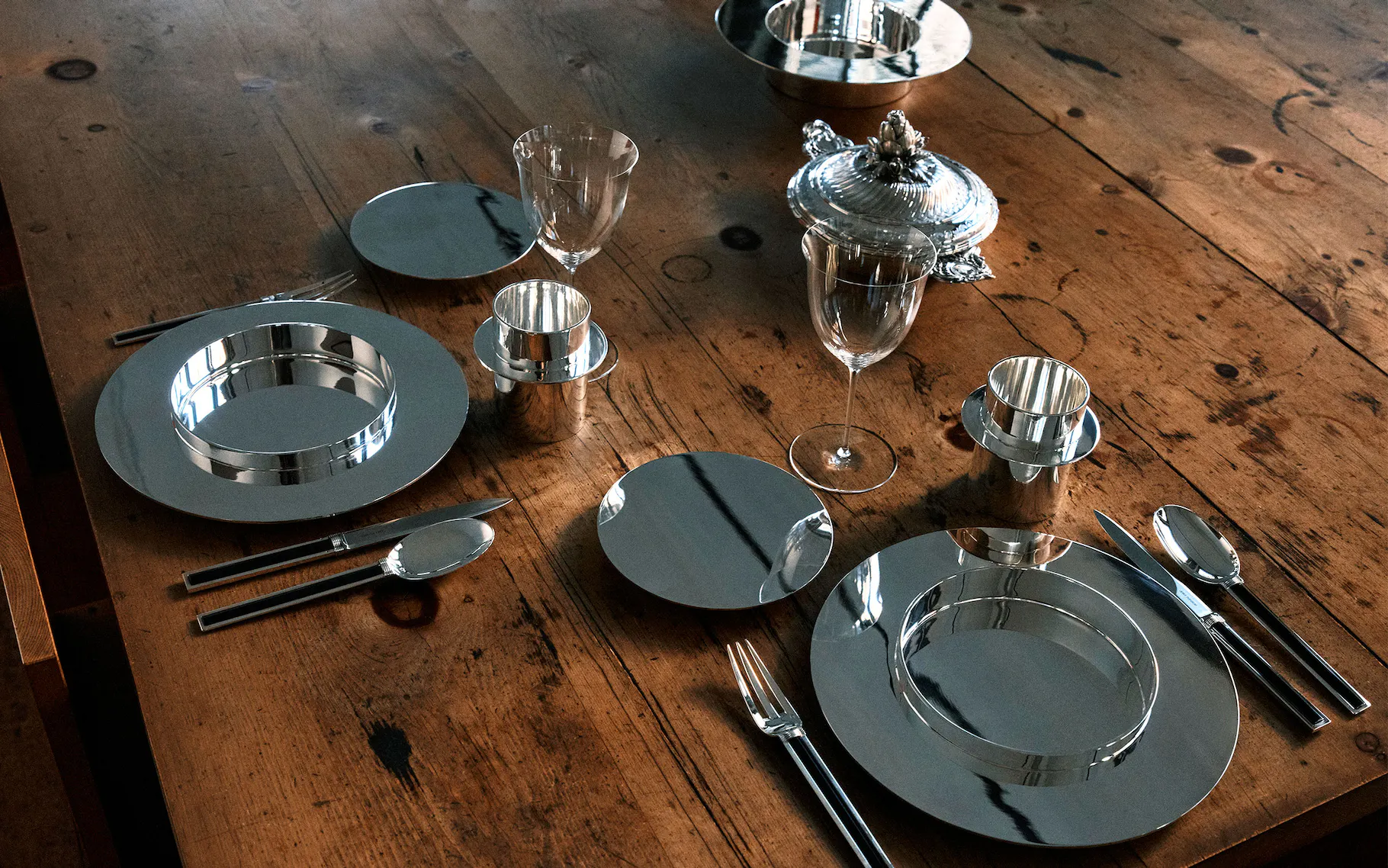
Puiforcat’s centuries-old European craftsmanship was vital to the project’s success.
Image courtesy of: Texas Monthly, photographed by: Eric Poitevin
The dinner-serving set was developed in close collaboration with Flavin Judd, the artist’s son. Flavin, also the Judd Foundation’s artistic director, was committed to achieving the “razor-sharp precision” that his father intended. As such, he knew that only a select number of silversmiths could achieve the desired effect.
Puiforcat’s expert silversmiths use a blazing molten-filler technique which means that no welding points are visible. Alex Fabry, deputy artistic director of Hermès Maison said that the new collection “is quite in keeping with Puiforcat’s legacy: working with the greatest creators of our time, without ever abandoning the goal of functionality.”
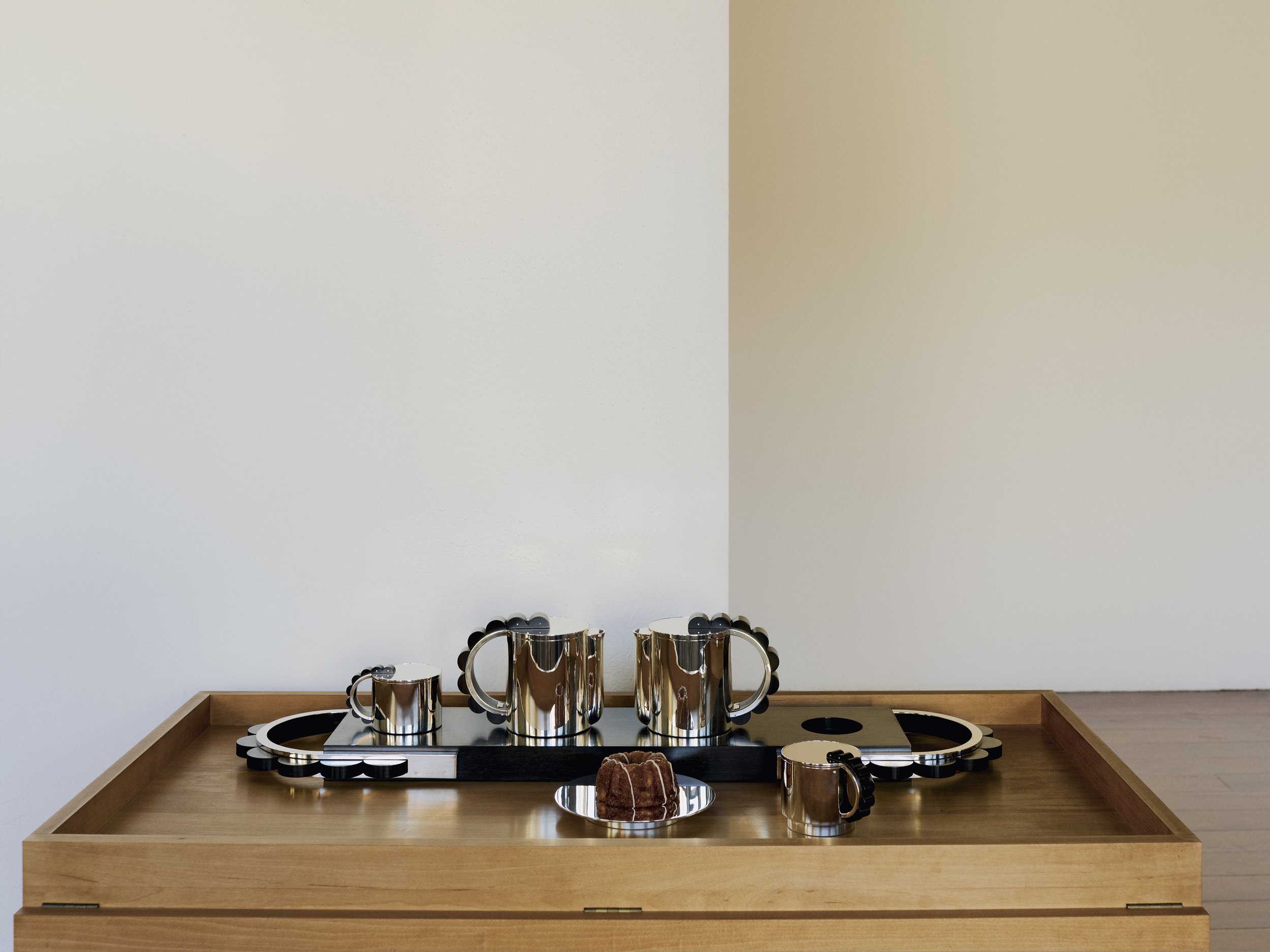
Part of the eight-piece dinner service set.
Image courtesy of: Pendulum Magazine, photographed by: Eric Poitevin
The set of engineered drawings were so specific that there as no reason to second-guess on anything; Judd left nothing to change in regards to what the pieces were suppose to look like. Using the 200-year old luxury design company was a given. Flavin said (courtesy of an article by Maxine Richter for Texas Monthly) ” Silver is a very specific material and like all materials it has limits. [Those] limits tell you what to do.” Puiforcat’s silversmiths keep the craft metal at the same temperature to maintain malleability and use a molten-filler technique so that no welding points are visible along the perpendicular edges. Keeping the surface free of any imperfections is extremely difficult to do.”
The collection is rendered in polished silver and is made to order… with the price tag, these pieces do not just sit on the shelves.
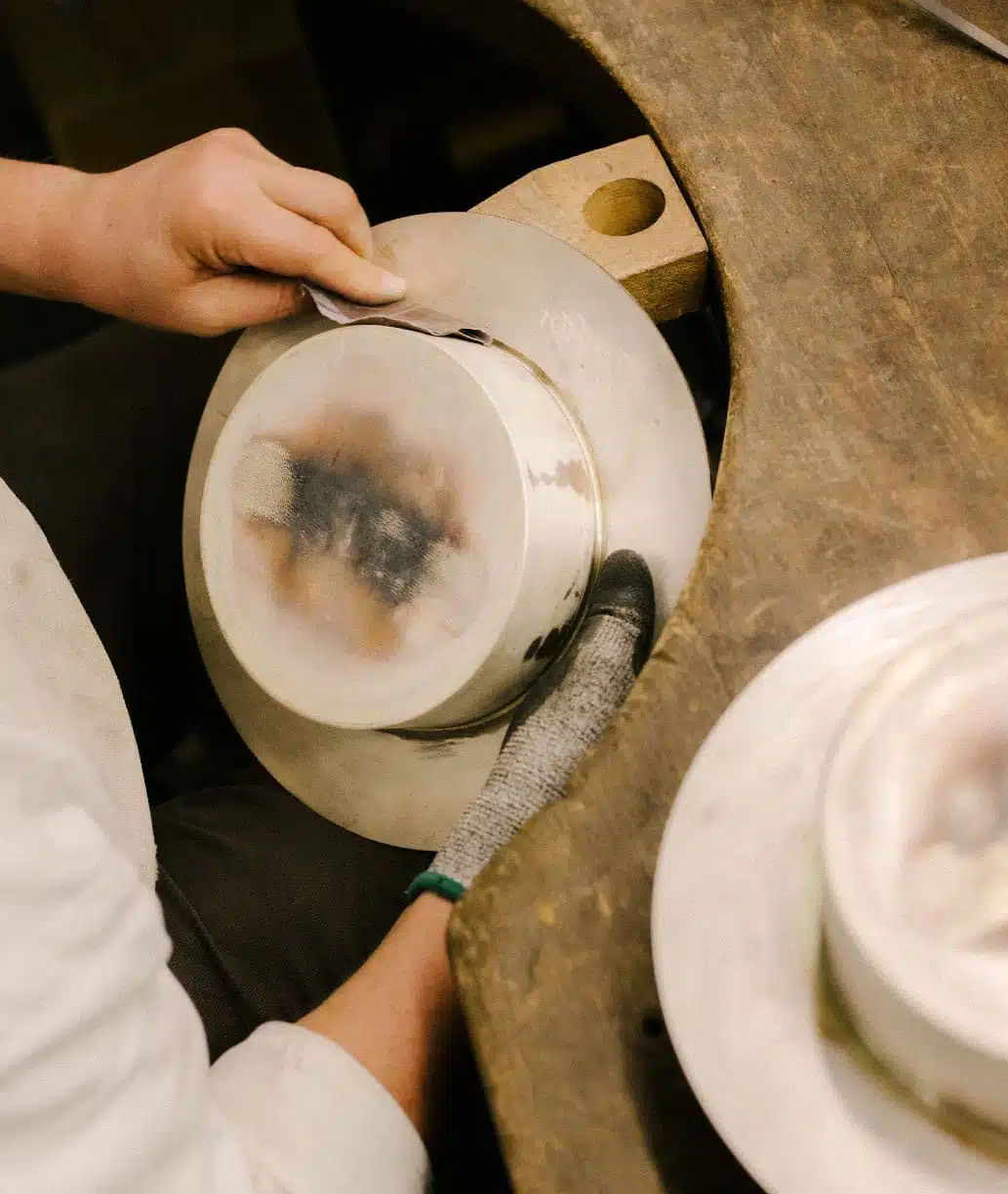
Part of the process at Puiforcat.
Image courtesy of: Puiforcat
Every single piece produced in the Puiforcat workshop has the unique number to identify it in the House’s registers. In addition, the piece also has the Puiforcat “hallmark” to certify the authenticity: a diamond or oval shape with a pocket knife in its center. Finally, the piece is flanked with the initials “E” and “P” for Émile Puiforcat, the company’s co-founder.
Courtesy of Texas Monthly, Fabry said “Judd Foundation has a long-standing relationship with Hermès; as a heritage company, we have shared values of material standards and craftsmanship. This project was the result of conversations on the possibilities of working with the artistry employed by the experts within Puiforcat, and there was an opportunity to complete Don’s intentions and realise these in silver.” Mission accomplished!
